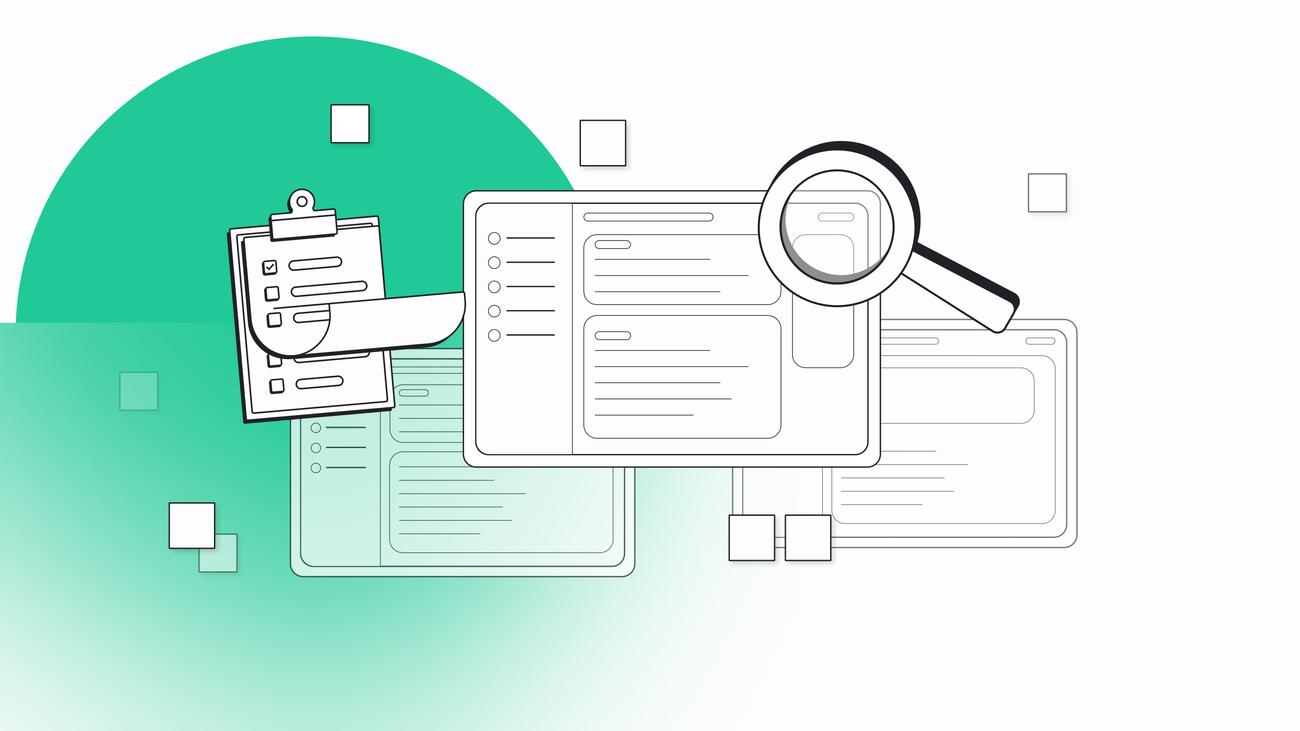

You finally get the digital product. It’s ready. But, when you launch it, it turns out the real users don’t know how to use it. In short, your solution fails its one purpose – to provide value to the target audience. Does it need quick fixing or a major redesign? What’s happening?
This and many more situations with little user engagement are not uncommon. In fact, they’re connected with one big idea – user experience. And this is when UX audit comes to light. The process for extraordinary tasks.
What is a UX audit? What are its benefits? In what situations should you consider carrying out a UX review audit? Read this introductory article and find out!
What is a UX audit?
UX or usability audit is the process of evaluating the digital product or service in terms of user experience. In other words, it pinpoints the problematic areas of your solution and reveals missing opportunities that may cause lower conversion or poor user engagement.
It’s not a tool to solve all those matters, but it’s an excellent foundation for further fixing or redesigning. And the truth is, both big companies and growing startups can benefit from it.
What happens during a UX audit?
As with all types of design audits, most of them are done by research. UX auditing teams spend several days going through user interviews, reviewing product data and its documentation. They also focus on usability heuristics that provides seamless user journey to the target audience.
During the process, the UX team uses various tools and metrics to make the analysis as comprehensive as possible. They gather quantitative data and qualitative data, check user flow and very often conduct usability testing. All of it, to get as much feedback as possible and boost customer satisfaction and with that, conversion. UX designers check engagement, conversion metrics, sales data, traffic, do wireframing and more.
Thanks to a UX review, product designers can find out:
- if the app navigation is clear for the target users (usability issues),
- how actual users behave within the app,
- if any functionalities are redundant/missing,
- if the product/service meets the user’s needs,
- what data is collected, and which should be gathered.
By the end of the UX audit, you should get a report with all the findings and follow-up suggestions (but more about it later). However, there’s no universal format for it. Everything depends on the project’s complexity, size, etc.
What do you gain from UX audit?
Design audits done by an experienced agency can bring many benefits to the business. For one, it gives you actionable feedback in the form of a UX audit report that you can work on based on in-depth analysis, not just assumptions.
UX audits also give you all the information that can be the base for redesign or fixes on major and minor usability issues, like updating user flows, to improve user experience and enhance customer engagement. And finally, they provide you with everything you need to boost conversions and ROI.


Have a project in mind?
Let’s meet - book a free consultation and we’ll get back to you within 24 hrs.
UX audit outcome
Once the user experience audit is done, you will probably get a UX audit report with all the data. In this way, all UX audit findings are in one place.
Inside UX audit report, you’ll find:
- project description and the goals of the design audit,
- methodology (that includes, among others, competitive analysis, customer journey mapping, heuristic evaluation),
- test results,
- actionable recommendations and suggestions.
When should you consider a usability audit?
Generally, a UX audit works best for websites or software that are still in development. The data based analysis can reveal a lack of user flows and reduce bottlenecks in a user journey. But a good design assessment is also recommended for new functional features and to identify the customer’s challenges with navigation in websites or apps.
So, to sum up, there are generally 2 situations in which you should introduce UX review as a part of the process.
When you want to check the UX of your product/feature
Validating the idea for a solution or a new functionality before releasing it to the market is crucial. Thanks to the UX audit, you’re going to be sure that the solution you give is adapted to its target audience. The UX audit will pinpoint the necessary changes to make the digital product more intuitive and user-friendly.
When you’re looking for a place to improve or preparing for a redesign
Your solution is already on the market but does not perform as well as it should. In this situation, a UX audit will help you determine which changes should be made to boost conversions and user engagement.
Also, design audits are great when you’re planning an application redesign. This way, you can prepare the foundation and launch a better product version.
How to prepare for a UX Audit?
A UX audit requires several benchmarks for an evaluation of digital products. Here’s what you need for an UX Audit.
Product Data and Analytics
To carry our a holistic audit, UX researchers must collect product analysis and information such as heatmaps and click tracking. These can be acquired from analytics tools, such as Google Analytics or Hotjar. This type of data is crucial in understanding the way users navigate digital products and determining if designers are considering modifying products for such behaviors.
On the other hand, a report on sales and profits can be used by an auditor to measure product success based on KPIs and sales performance indicators.
User Personas
When performing your UX audit, you need to identify the personas of your current users to verify whether you’re meeting user pain points and needs.
Clearly defined business goals
In preparing to perform UX audits, the design team need to know the company’s business goals and objectives. The collected data of the business perspective will help them determine the core value of the existing digital product.
Audit constraints, deliverables & deadlines
Finally, an auditor needs to know about the client’s budget and resources limits, deliverables and deadlines. Those details are also crucial during UX design audit.
Our experience with UX audits
At Gorrion, we perform UX audits during our projects. One of our recent ones was for DeepSync Labs. Here, we had two goals – to boost sales and make the solution more user-friendly. As we were working on the product that was already on the market, we had to focus on 2 things at once – to implement necessary fixes and do the heuristic evaluation. The result? After 1 year, our client had 6 times more customers.
Discover more details about the cooperation from the DeepSync Labs case study.
Bottom line
As you can see, user experience audits are extremely beneficial. With the right approach and team, you can change the path of your business and deliver pure value to your audience.
So if you feel that your product doesn’t deliver to customers the expected experience, UX audits are the way to go. There’s no time for setbacks in business, especially in the IT industry.
At Gorrion, our experts make an in-depth analysis of your solution, carry out usability tests, determine the key issues and suggest the next steps to enhance your online presence. So don’t wait, book a free consultation with us and get your product to the next level.


Have a project in mind?
Let’s meet - book a free consultation and we’ll get back to you within 24 hrs.
Ela writes about the fundamentals of great development, project management approaches, ways to develop a proof of concept or an MVP, UX, our company culture, and many other things happening in Gorrion.



